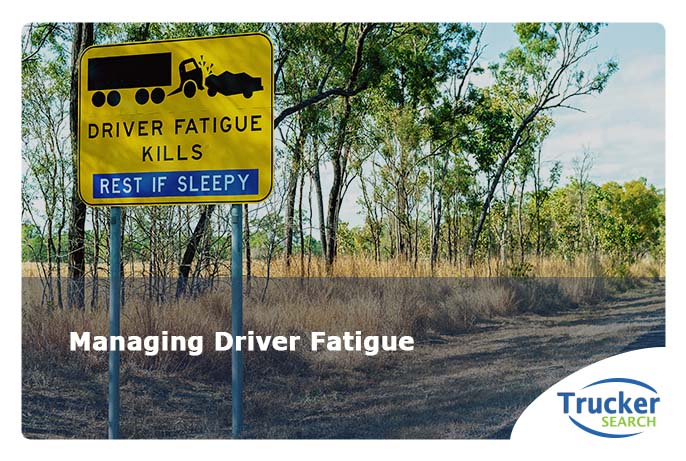“Driver fatigue” is a common expression used by long-haul and commercial truckers. At some point during their career, every truck driver is bound to experience driver fatigue. Driver fatigue is caused by physical or mental exhaustion due to being on the road. Drivers who experience driver fatigue have a higher chance of getting into an accident because it can lead to slower reaction times and the decreased ability to assess situations quickly. Many factors can be the cause of driver fatigue including, lack of sleep and working long hours. It is a major issue and every driver needs to know how to stop it from happening.
Every driver, including truck drivers, needs to be alert behind the wheel. Being alert not only keeps them safe, but everyone else around them, too. It is up to the driver to choose the best way for him or her to battle fatigue. Here are a few options to choose from.
Get a Good Night’s Sleep Beforehand
To function at your best, it is recommended that adults get at least seven hours of sleep every night. This will help you stay alert and be as responsive as possible while driving. Getting an adequate amount of sleep will also help you to be mentally and physically ready for any potential incident.
Keep a Healthy Diet
Maintaining a healthy diet can be difficult in general, but it can be even harder for long-haul and commercial drivers. That doesn’t mean you have to be discouraged because it can be done, but it will take determination. To maintain a healthy diet you should steer clear of fast food and choose healthier alternatives, such as packing and bringing food from home. Stay away from eating heavy meals because it takes a lot of energy to digest them. Eat lighter or smaller portions throughout the day and try snacks such as almonds and apples to keep you fuller longer.
Take Breaks About Every 2 Hours
Taking breaks from the road every two hours will help you stay alert. It provides you with the chance to stretch, go for a walk, get some fresh air, and get a change of scenery.
Take a Pre-Drive/Mid-Drive Nap
There will be times you might not get a good night’s sleep the night before you start your long drive. If that’s the case, try to make time to fit in a nap before you start your drive, even if it is only for an hour. If you do not have the time before, make sure you visit a rest stop to try to fit in a short nap. Trying to fight your fatigue can be dangerous.
Limit Caffeine
Although caffeine can be helpful when consumed in moderation, it can lead to a “caffeine crash” causing you to be more tired than you were before. Therefore, enjoy a caffeinated beverage every so often because it can help, just do not overdo it.
Stay Hydrated
Dehydration can lead to drowsiness and headaches. Staying hydrated is very important because water has natural properties that will help you feel awake.
Adjust Your Environment
When it comes to fighting fatigue, there are many ways you can do it within the cab or tractor. These include keeping the temperature cool, repositioning your seat, rolling down the windows for fresh air, playing mental games, and listening to podcasts instead of music.
Make Use of New Technology
The following are five new anti-fatigue technologies that are being utilized in the trucking industry.
- Fatigue meters-uses service logs to predict fatigue levels by approximating your sleep pattern on actual duty periods and uses the approximation to predict fatigue
- Wearables-includes wristwatches, eyeglasses, and other Fitbit-like devices
- Anti-fatigue headwear-the use of smart hats with sensors on the forehead to identify head movement and measures brain waves for signs of fatigue. This information is then sent to a unit in the cab wirelessly
- Smartphone tests-uses psychomotor vigilance task (PVT) which measures the cognitive alertness of truck drivers
- Facial mapping-systems take images of the driver’s face to locate symptoms of fatigue including head nodding, gazing, drooping eyelids, yawning, and head orientation.
Driver fatigue is not a matter that should be taken lightly. It is a significant issue and every truck driver should be aware of the ways to fight it. Find a way that works best for you and try something new. You might be surprised at what works and what doesn’t. Make it a priority to combat driver fatigue not only for your safety, but for everyone else out on the road.

